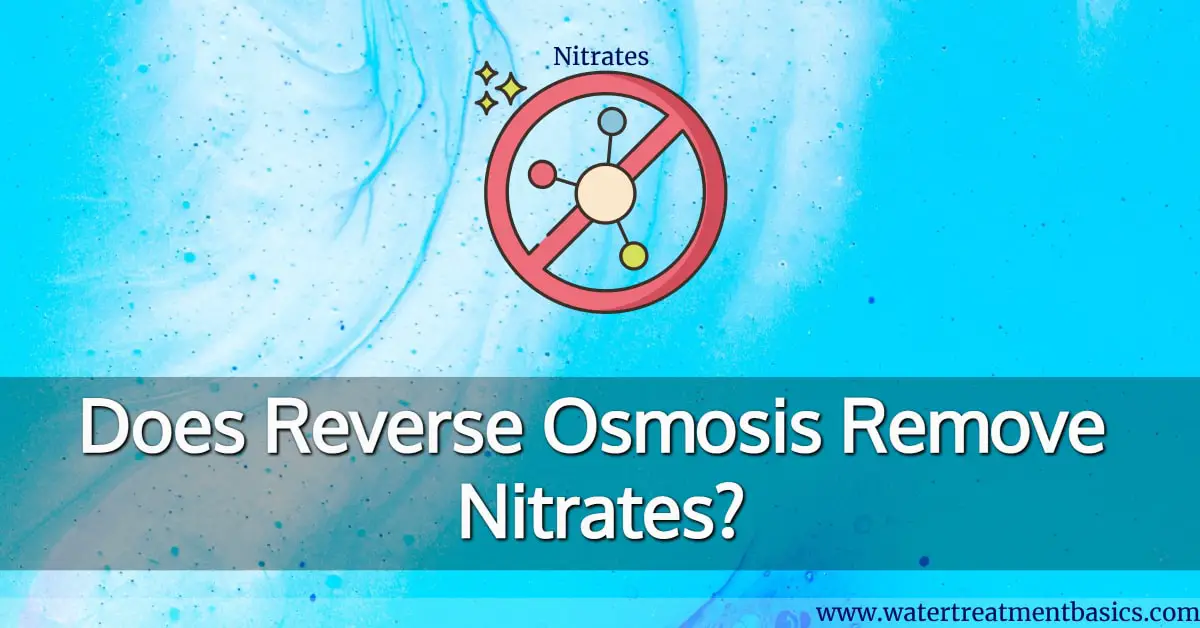If you are concerned about the presence of nitrates in your drinking water, you may be wondering, does reverse osmosis remove nitrates from water?
This article will examine whether reverse osmosis is capable of removing nitrates from drinking water, discuss the benefits of using reverse osmosis to remove nitrates, and explore it in detail.
Reverse osmosis is a common water filtration method used to remove a wide range of contaminants, including dissolved solids and chemicals, from drinking water. One of the most common chemicals found in drinking water is nitrate, a compound formed from nitrogen and oxygen molecules.
Nitrates can enter water from various sources, such as fertilizer runoff, sewage, and animal waste. As a result, it is important for households to have access to safe drinking water that is free from nitrate contamination.
What is Nitrates?
Nitrates are chemical compounds that contain nitrogen and oxygen atoms. They are often found in fertilizers and explosives, and they can also be used as a food preservative or a medication for certain medical conditions.
In the body, nitrates are converted to nitric oxide, which plays a role in many important physiological processes. Nitric oxide helps relax and dilate blood vessels, which can help lower blood pressure and improve circulation. It also plays a role in immune function and in the regulation of blood sugar levels.
However, high levels of nitrates in the diet can be harmful, as they can interfere with the body’s ability to absorb certain minerals and may increase the risk of certain types of cancer. It is important to consume nitrates in moderation and to consult with a healthcare professional if you have any concerns.
Types of Nitrates Found in Water
There are several types of nitrates that may be found in water, including:
- Nitrate (NO3-): This is the most common form of nitrate found in water, and it is typically introduced through the use of fertilizers, animal waste, and sewage.
- Nitrite (NO2-): Nitrite is less common in water than nitrate, but it can be formed through the breakdown of nitrate. Nitrite is more toxic than nitrate and can be harmful to humans and animals if ingested.
- Ammonium nitrate (NH4NO3): This is a chemical compound that is often used as a fertilizer, but it can also be found in water as a result of industrial pollution.
- Nitrogen oxides (NOx): These are gases that are formed during the combustion of fossil fuels, and they can be emitted into the air and then deposited into water bodies through precipitation.
It is important to monitor the levels of nitrates in drinking water, as high levels can be harmful to human health. Nitrates can interfere with the body’s ability to absorb certain minerals and may increase the risk of certain types of cancer.
Effects of Nitrates in the human body
In the body, nitrates are converted to nitric oxide, which plays a role in many important physiological processes. Nitric oxide helps relax and dilate blood vessels, which can help lower blood pressure and improve circulation. It also plays a role in immune function and in the regulation of blood sugar levels.
However, high levels of nitrates in the diet can be harmful, as they can interfere with the body’s ability to absorb certain minerals and may increase the risk of certain types of cancer. Some studies have suggested that high levels of nitrates in the diet may be linked to an increased risk of colon, stomach, and bladder cancer.
Ingesting high levels of nitrates can also cause a condition called methemoglobinemia, in which the body is unable to properly transport oxygen in the blood. Symptoms of methemoglobinemia include fatigue, headache, dizziness, and shortness of breath. In severe cases, it can be life-threatening.
nitrates removal Effectiveness of Reverse osmosis
Reverse osmosis is an effective way to remove nitrates from water. This process works by forcing water through a membrane that is designed to capture and remove nitrates.
Reverse osmosis is capable of removing up to 99% of nitrates, including nitrates from agricultural runoff, industrial waste, and sewage.
Additionally, reverse osmosis can also remove other potentially harmful contaminants such as lead, fluoride, arsenic, and more. Reverse osmosis is an effective way to remove nitrates from water, making it a great choice for those looking to improve their drinking water quality.
Reverse osmosis is one of the most effective methods for removing nitrates from water. The reverse osmosis process is a pressure-driven process that uses a semi-permeable membrane to capture and remove nitrates from water.
This process is often used in water filtration systems to improve the quality of drinking water. Here are three benefits of using reverse osmosis filtration for nitrate removal:
- Reverse osmosis is highly effective at removing nitrates from water, with the ability to reduce nitrates by up to 99%.
- It’s a relatively low-cost solution for removing nitrates from water.
- Reverse osmosis is a safe, chemical-free process that can be used to improve the safety and taste of drinking water.
Conclusion
reverse osmosis is an effective way of removing nitrates from drinking water. It’s an affordable and relatively easy process, and it can be used on a variety of water sources.
However, it’s important to keep in mind that reverse osmosis is not a substitute for regular water testing and may not be able to remove all contaminants. Regular testing, combined with reverse osmosis, is the best way to ensure that your drinking water is safe to consume.
